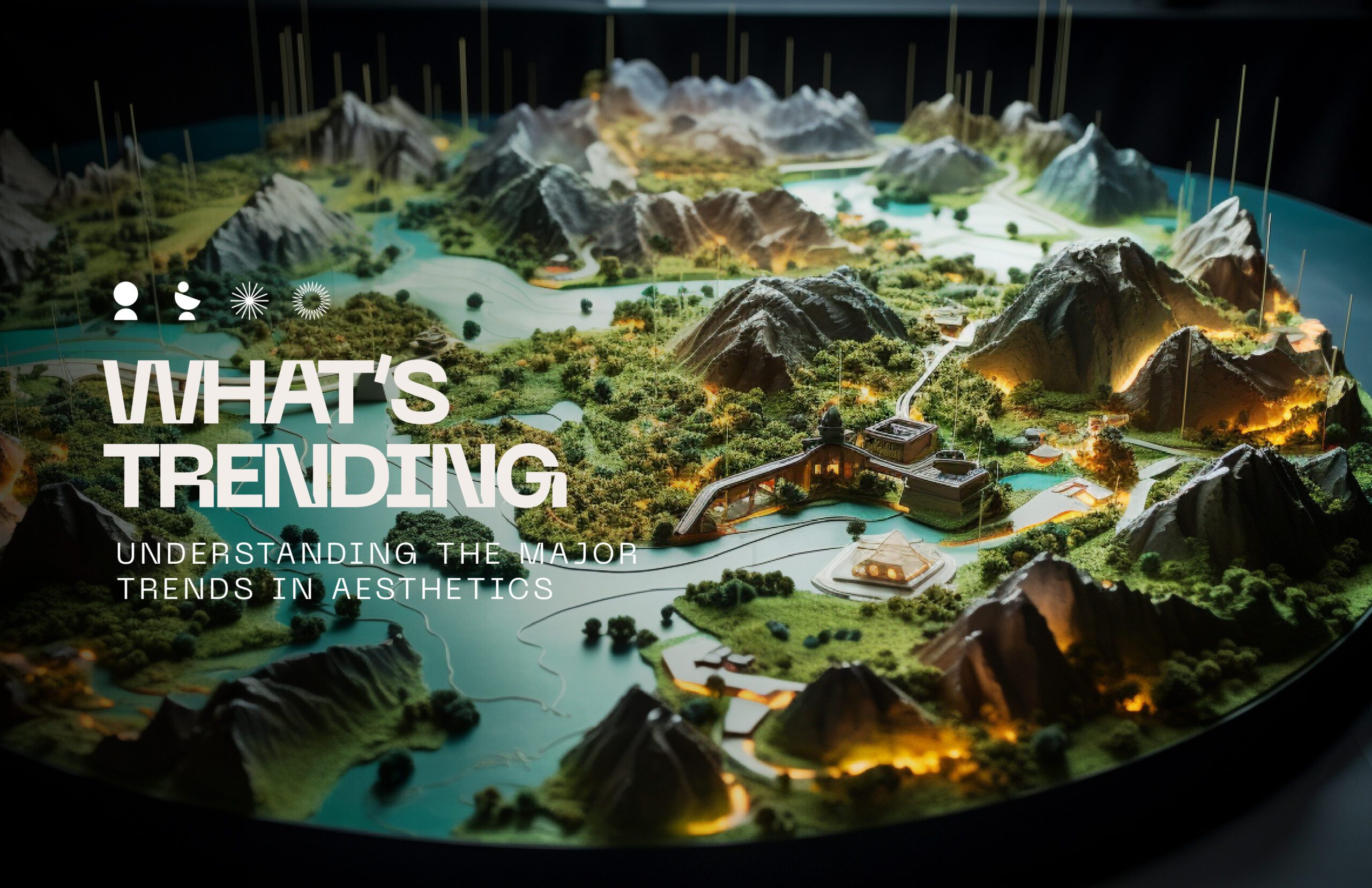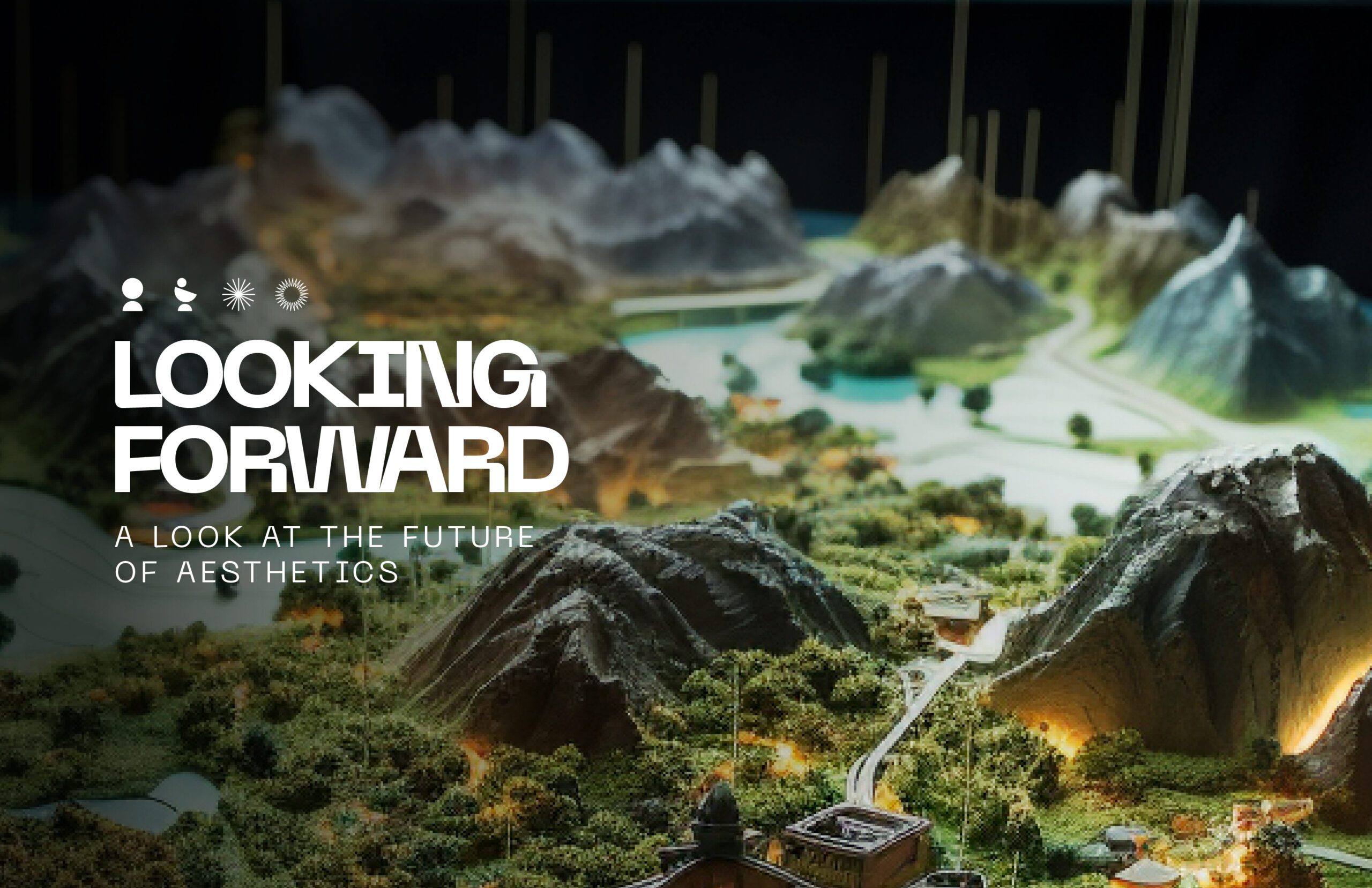Blog
What is the future of aesthetics

Contents
Medical aesthetics: A swiftly growing field
The promise of anti-aging
5 major trends in the aesthetic industry
Innovative therapeutic approaches
Destigmatization and diversity
Regulations and safety standards
A holistic approach to aesthetics
The future of aesthetics: Key takeaways
Regenerative, preventative, and well-rounded: the future of aesthetics promises superior effectiveness. Are you ready to hop on the beautification bandwagon?
Clients of every demographic are seeking to unlock the best version of themselves. They’re revolutionizing the field of aesthetics, and the shifts are positive. Treatments are becoming better, easier to handle, and accessible to all.
Keep reading to learn about the aesthetic trends in 2023 and beyond. We discuss the broad strokes, zero in on five key trends, and provide the societal and legal context.
Medical aesthetics: A swiftly growing field
Medical aesthetics include procedures geared toward improving clients’ cosmetic appearance. It sits between plastic surgery and beauty care.
Procedures in medical aesthetics require more training and anatomical knowledge than beauty treatments. But they’re not as aggressive as surgical intervention. As such, they offer an easier way to make yourself more attractive.
And more people are joining the trend.
Medical aesthetics is a highly resilient and profitable industry. with expected double-digit growth by 2027. Clients are becoming well-educated and empowered to make informed beauty care decisions.
What do these developments mean for the future of aesthetics?
Expect cheaper, higher-quality, and patient-centric services. Clinics now offer well-rounded plans that involve treatments as well as post-procedure care and counseling. As the importance of customer relationships grows, experts are becoming better communicators.
There are also more non-surgical alternatives than ever. They attract folks who want to avoid risks and recovery associated with surgery. Such non-invasive treatments often look natural and have minimal downtime.
Innovative technologies and techniques are being developed each year. Qualified professionals are entering the space, accommodating patients with different needs. The focus is on long-term, regenerative, and preventative treatments.
As the world population matures, anti-aging emerges as a global trend. Medical aesthetics may offer solutions to various age-related concerns.
The promise of anti-aging
Wanting to reverse aging is nothing new, but we’re closer than ever to that goal. Two factors are in play: early treatments and scientists learning to regenerate cells.
Age reversal is a multi-billion-dollar industry. It involves skin care products, medical treatments, and lifestyle programs. The demand is on a sharp rise, driven by technologies that enable it.
As it seems, the future of aesthetics is about slowing down the passage of time.
Youth is celebrated and sought after, no matter the person’s age. The beauty industry reflects and capitalizes on this global trend. Its hallmarks include:
- The focus on a youthful appearance. Skincare creams and serums aim to reduce wrinkles and improve skin texture. Cosmetic procedures like facelifts and fillers minimize skin sagging that comes with aging.
- The regeneration of aging cells. Advances in medical aesthetics raised the possibility of regenerating aged tissues. Stem cells and platelet-rich plasma hold promise in the field of rejuvenation.
- The use of cosmeceuticals. Cosmeceuticals are cosmetic products with medical or therapeutic properties. Their benefits surpass traditional skin care products. Common ingredients include anti-aging retinoids, peptides, and growth factors.
5 major trends in the aesthetic industry
The skin care market and medical aesthetics are blending. Younger, better-educated clients want to look as good as possible for as long as possible. The resulting field is scientifically informed, tech-driven, and supports everybody’s appearance.
Let’s explore the five unique aesthetic trends shaping its present and future.
1. Emphasizing regenerative treatments
Aging makes the skin deteriorate in quality, causing wrinkles, spots, and sagging. Many emerging treatments seek to reduce or reverse this damage at ground zero.
Regenerative treatments focus on harnessing the body’s natural rejuvenating capabilities. They encourage our cells to repair damaged tissue and snap back into tip-top shape. Besides revolutionizing healthcare, they do wonders for aesthetic purposes.
Notable developments in this global trend include:
- Stem cell therapy. These undifferentiated cells may re-develop damaged cells around the body. They infuse our aging tissues with new life, reversing signs of aging.
- Platelet-rich plasma (PRP) therapy. This approach uses a patient’s own blood rich in growth factors. When injected, it stimulates healing and regeneration.
- Exosome therapy. Exosomes are tiny vesicles that contain proteins and genetic material. They improve the interaction between cells and speed up rejuvenation.
More clinics dealing with aesthetics in the world offer such treatments. They’re becoming more obtainable, if not the norm of age reversal.
2. Embracing the natural appearance
The younger generation appreciates preserving natural, diverse appearances. As it dominates the consumer base, it causes a shift in the focus of aesthetic treatments. An Instagram face is no longer the one-size-fits-all ideal. Rather, we enhance each person’s uniqueness.
This move is likely the response to the microtrends across aesthetics in the world. We know that the look idealized today isn’t like the one society preferred a few years ago. As trends are prone to changing, chasing an imagined ideal makes little sense.
As a result, the same treatments now deliver different results.
Dermal fillers and Botox injections remain popular ways to improve facial aesthetics. But radical transformation is no longer the goal. Instead, they focus on subtle enhancements to maintain the person’s natural features.
This trend suggests the future of aesthetics will bring greeted customization. Beauty treatments are likely to become more about self-expression and personal choice.
3. Natural and eco-friendly beauty care
Societal awareness caused a shift towards holistic beauty habits. No more artificial ingredients or quick solutions. We now want clean, long-lasting, natural treatments to benefit our skin and the planet.
Sustainably produced beauty care is the next big thing in aesthetics. Surveys reveal that more consumers want eco-friendly, organic options. Brands that innovate by incorporating new natural ingredients benefit from this global trend.
We can’t disregard the impact of technology. It lets brands discover, source, research, and develop sustainable ingredients. Contemporary cosmetics and treatment options use natural components to promote eco-friendliness.
This shift requires education and transparency of the brands and influencers. Misleading claims are far from tolerated. The same goes for companies that don’t inform customers of their sourcing practices.
4. Less invasive aesthetic procedures
Traditional plastic surgery has risks and longer downtime. Society is moving away from them and toward non-surgical enhancements. Trend drivers include a desire for natural results, convenience, and accessibility.
Laser treatments gained prominence in this move. Options like Morpheus8 remodel the skin with minimal risk. They cause micro-injuries of tissues, making the body regenerate its skin. The results are better complexion, contours, and pore size.
Maintenance treatments see increased demand, too. Individuals in their 20s and 30s now opt for procedures like Botox to nip wrinkles in the bud. How’s that for the future of aesthetics?
The easier recovery of these procedures also lets practitioners combine them. Combination therapies tackle several concerns in a single session. Think rejuvenation and re-tightening. The results tend to be dramatic and comprehensive without the need for surgery.
5. Artificial intelligence and virtual reality
Virtual reality (VR) creates a simulated environment or experience. Aesthetic brands use smart mirrors that let customers virtually try on skin care. They can see how an item looks on them without visiting a physical store.
Beyond beauty items, technology helps folks choose their aesthetic procedures. Artificial intelligence (AI) technology is predictive and provides virtual makeovers. Clients may envision how a treatment may change their appearance before undergoing it.
These methods are cost-effective and personalized. They account for your preferences, body type, and facial features. They let you make informed decisions on your beauty products and procedures.
Innovative therapeutic approaches
Biotechnology is on the rise in the field of aesthetics. It includes the production of new methods and organisms that improve our health. It’s an age-old field that’s resurged in recent years.
We already mentioned the greatest aesthetic-related biotech miracles, but they bear further exploration. Peptides, stem cells, and PRPs are regenerative, de-aging our bodies from the inside out. They exhibit incredible potential for traditional and aesthetic medicine.
Let’s explore these super-substances as the future of aesthetics.
Peptides
Peptides are short chains of amino acids found in the body. They play a part in various physiological processes, from metabolism to mood stabilization. We produce many of them naturally or consume them through food, but their numbers drop as we age.
Peptide therapy supplements these essential molecules and improves your body’s natural functioning. It heals through pre-existing processes, making it well-tolerated and free of side effects.
Peptide therapy for anti-aging is one of the latest trends in aesthetics of the world. It replenishes the proteins responsible for skin health, like collagen and elastin. The result is a youthful-looking face with fewer fine lines and less sagging.
Besides boosting appearance, peptides could strengthen the skin. They ease inflammation, treat breakouts, and make you resilient to pollutants and stressors.
PRP
Platelet-rich plasma is a component of blood. It contains growth factors and healing agents, making it beneficial for therapeutic use.
Practitioners don’t have a stock of generic PRP. Instead, they extract it from your own blood and administer it by injections. For this reason, the body accepts the substance with no side effects.
PRP facials work well in isolation or combined with lasers, fillers, or Botox. In either case, we microneedle the PRP into your face and let it do its magic.
Such facial treatments increase collagen production and skin moisturization. They alleviate wrinkles, heal scarring, even the skin tone, and improve the complexion. It’s no wonder they’re a global trend.
Stem cells
Stem cells are undifferentiated cells that may develop into specialized cell types. They garner interest in beauty circles due to their regenerative properties.
These cells boost the appearance of our face and hair. They replenish skin layers with new, young material and improve the entire structure. Results are natural-looking and patient-specific.
Stem cell therapies focus on rejuvenation and may address various cosmetic concerns. Fine lines, skin sagging, discoloration, and dullness are a piece of cake. They’re non-surgical, minimally invasive, and fast-acting.
Regenerative treatments are the future of aesthetics: stem cells are at its forefront. With sustainable sourcing and further studies, we expect to see them more and more.
Destigmatization and diversity
The stigma surrounding cosmetic procedures is on a steady decline. As medical aesthetics grow in size and scope, there’s less shame attached to “getting work done.”
Younger social media users are driving this change. They embrace prejuvenation to address aging before it even happens. It’s a part of the broader emphasis on wellness, where aesthetic treatments are self-care.
This normalization relates to another global trend: diverse beauty and natural-looking results. Young clients want to keep the body and skin healthy but not alter it to fit trends. Instead, the focus is on emphasizing individual beauty.
Millennials and Gen Z want to see unique aesthetics, not standardized treatments. Brands respond by emphasizing diversity in race, age, gender, and skin conditions. There’s no person too young, old, white, black, masculine, or feminine for beautification.
People of every ethnicity seek aesthetic treatments. As appearance preferences vary between cultural groups, representation is vital. This need doesn’t only refer to adverts. Ethnic experts should be available to treat different skin types.
Gender-inclusive beauty
Beauty care used to be the female domain, with men tending to steer clear of it. That’s no longer the case. Men are not only accepting these treatments, but they’re reshaping our concept of gender.
Men are still a minority demographic for aesthetics, but their engagement is growing. That’s especially the case for affluent individuals in North America. The demand for male aesthetic treatments is rising with the broadening option spectrum.
Popular procedures for men include Botox, jawline contouring, and fillers. The idea is the same as with female-focused treatments: non-invasive and natural-looking.
But we’re no longer dealing with the question of only men and women. The beauty industry is dropping the binary gender divide. Instead of “male” and “female” treatments, beauty is for all gender permutations.
Regulations and safety standards
The Food and Drug Administration (FDA) regulates and oversees medical aesthetics. With the boom of clinics providing such services, obeying the law grows in importance. Notably:
- Practitioner licensing. It takes a licensed medical professional to provide most beauty procedures. Estheticians can perform some treatments, but only upon getting certified.
- Facility certification. Clinical settings keep aesthetic treatments safe and controlled. Strict protocols for infection control, sterilization, and cleanliness are critical.
- Product safety. Aesthetic items like dermal fillers and neuromodulators require FDA approval. Manufacturers must follow standards and have independent lab testing to guarantee quality.
With aesthetics becoming a global trend, legality is no longer the only question. Ethics and patient wellness are becoming bigger questions by the year.
Education and informed consent
Most of us get information from online sources. For this reason, the importance of truth in advertising skyrocketed. The marketing materials for beauty procedures must be accurate and never misleading. They should divulge outcomes, risks, and associated costs.
Getting informed consent matters in this industry. Big promises with little backing won’t fly: transparency is the future of aesthetics.
Cultural competence is another must-have. Treatment providers should honor diversity and be sensitive to clients’ needs and backgrounds. Beyond race, ethnicity, and able-bodiedness, they must respect gender expressions.
Still, we must recognize that getting information online isn’t always foolproof. It’s the job of clinics to educate their clients and correct any misconceptions. This need ties well into the final point of this guide: the need for a well-rounded approach.
A holistic approach to aesthetics
Aesthetics in the world are moving away from an inject-and-eject model. There’s a need for a holistic view of each client’s individuality and wellness. This method acknowledges that beauty relates to physical, mental, and emotional health, treating all aspects with equal respect.
This approach combines modern medicine with a personalized doctor-patient relationship. It has no standardized treatments: each person gets a unique, tailored health plan.
Knowing your genetics is the culmination of the personalization trend. Testing might point to the causes of health issues and ways the body reacts to its environment. Think collagen production, inflammation risks, and metabolic functioning.
Such information affects treatment protocols and tailors them to the individual.
Due to this global trend, we no longer see many single-treatment clinics. They hire multidisciplinary teams of estheticians, nutritionists, dermatologists, and psychiatrists. Naturopathic doctors enter the picture to propose natural medicine and lifestyle solutions.
Prioritizing lifestyle shifts
Each person has a unique aesthetic journey. It consists of treatments, skin care routines, and lifestyle changes for wellness.
Modern doctors don’t only prescribe therapy. They analyze how you live and suggest ways to improve your habits.
A holistic approach includes a healthy lifestyle and may include:
- Nutrition and exercise. A balanced diet and regular exercise support skin health, energy levels, and vitality.
- Stress management. Stress harms skin and mental health. We often integrate techniques like relaxation and mindfulness to diminish it.
- Quality skin care. Using natural, nourishing products and protecting yourself from pollution and UV radiation is essential. It allows prevention even before you hit the clinic.
- Positive self-image. Practitioners encourage self-acceptance and self-love. These states of mind reduce stress and leave you feeling (and looking) your best.
The future of aesthetics: Key takeaways
The landscape of medical beauty care is undergoing a significant transformation. Several factors drive it, from cutting-edge treatments to the celebration of individuality. The future of aesthetics is about empowering individuals.
The focus on diversity and ethical business promises a brighter, more inclusive future. It shows that beauty comes in all shapes and sizes and, more importantly, caters to them all. The biotech developments eliminate aging signs and restore youthful looks. What’s not to love?
Schedule a consultation to enjoy futuristic aesthetics right here, right now. Talk to our naturopathic doctors and devise a plan for ultimate wellness.
Author: Dr. Jason Phan NMD – Founder of LIVV Natural – Anti-aging – regenerative medicine – peptide therapy


